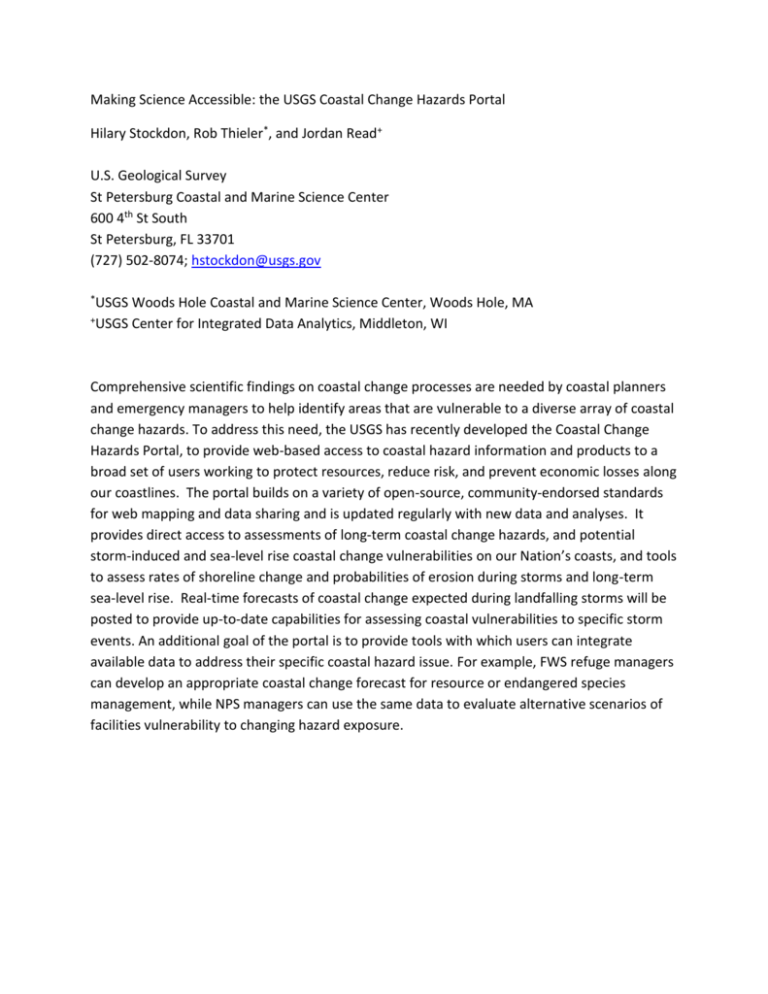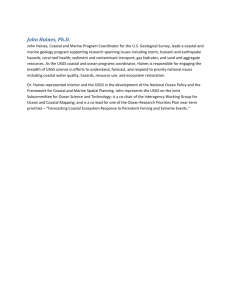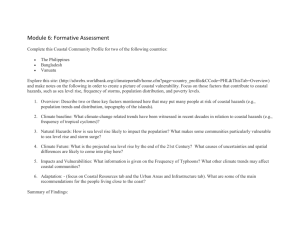the USGS Coastal Change Hazards Portal
advertisement

Making Science Accessible: the USGS Coastal Change Hazards Portal Hilary Stockdon, Rob Thieler*, and Jordan Read+ U.S. Geological Survey St Petersburg Coastal and Marine Science Center 600 4th St South St Petersburg, FL 33701 (727) 502-8074; hstockdon@usgs.gov *USGS +USGS Woods Hole Coastal and Marine Science Center, Woods Hole, MA Center for Integrated Data Analytics, Middleton, WI Comprehensive scientific findings on coastal change processes are needed by coastal planners and emergency managers to help identify areas that are vulnerable to a diverse array of coastal change hazards. To address this need, the USGS has recently developed the Coastal Change Hazards Portal, to provide web-based access to coastal hazard information and products to a broad set of users working to protect resources, reduce risk, and prevent economic losses along our coastlines. The portal builds on a variety of open-source, community-endorsed standards for web mapping and data sharing and is updated regularly with new data and analyses. It provides direct access to assessments of long-term coastal change hazards, and potential storm-induced and sea-level rise coastal change vulnerabilities on our Nation’s coasts, and tools to assess rates of shoreline change and probabilities of erosion during storms and long-term sea-level rise. Real-time forecasts of coastal change expected during landfalling storms will be posted to provide up-to-date capabilities for assessing coastal vulnerabilities to specific storm events. An additional goal of the portal is to provide tools with which users can integrate available data to address their specific coastal hazard issue. For example, FWS refuge managers can develop an appropriate coastal change forecast for resource or endangered species management, while NPS managers can use the same data to evaluate alternative scenarios of facilities vulnerability to changing hazard exposure.








